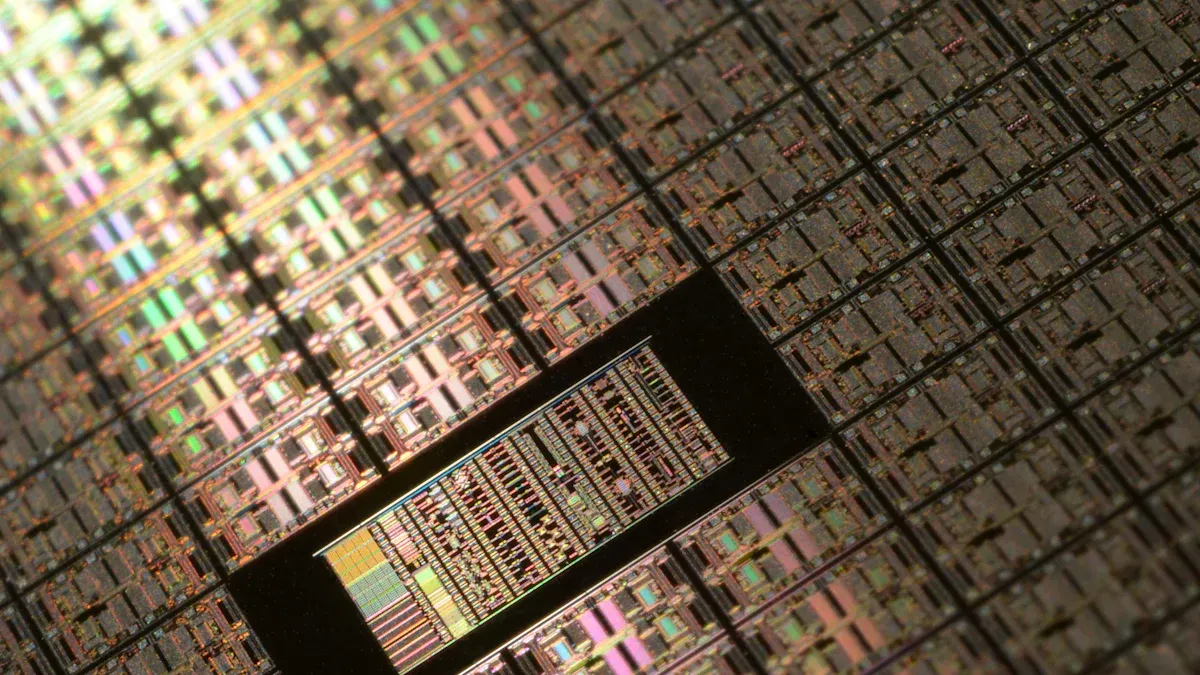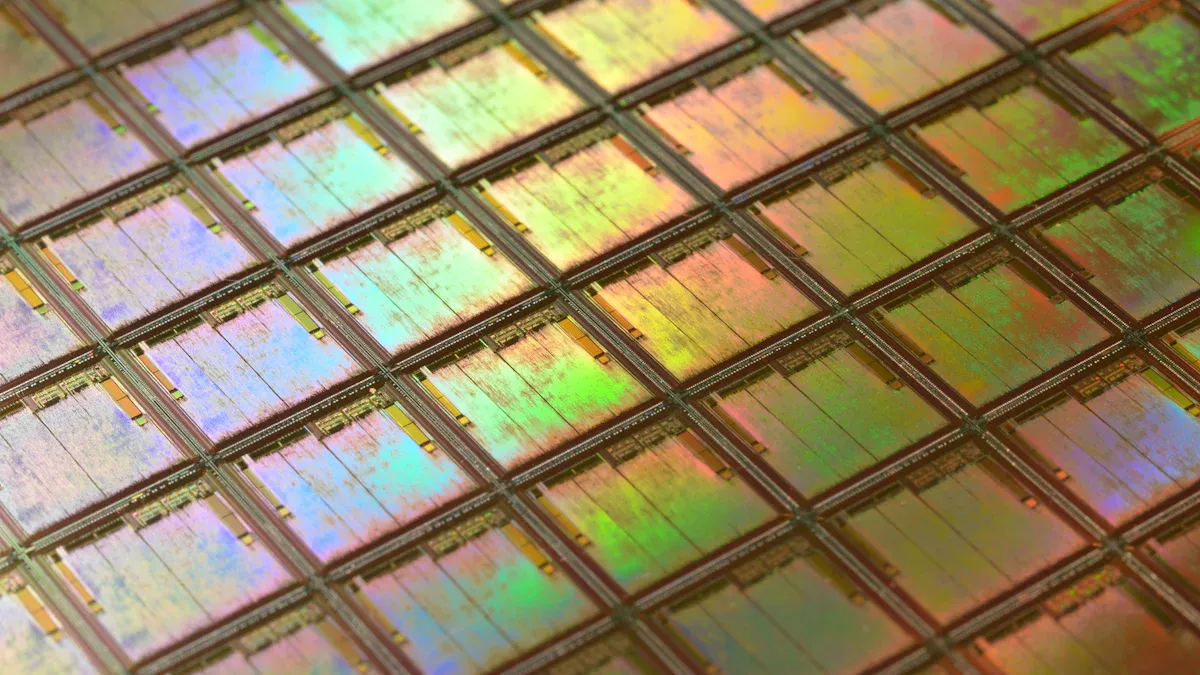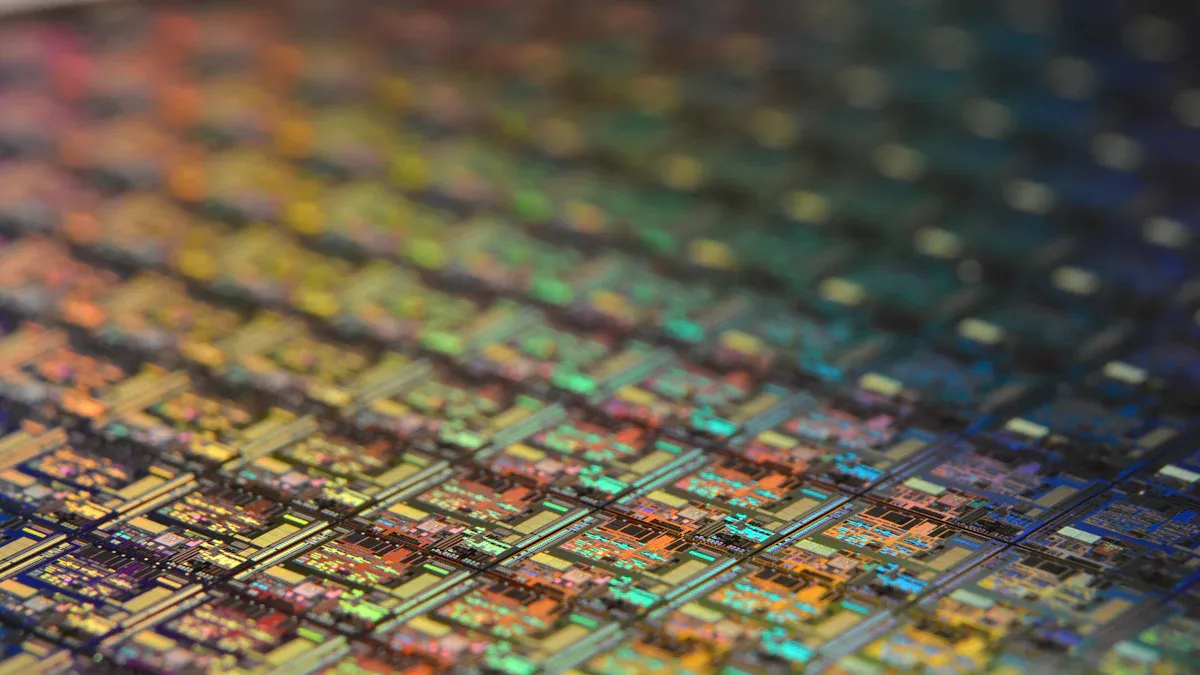
High-Temperature SiC Coating helps you protect graphite from damage in harsh environments.
- You get longer-lasting parts.
- You see cleaner surfaces.
- You can use graphite in places like a Silicon Carbide Wafer Pedestal.
RTP/RTA SiC Coating、SiC Coating gives you more reliable results at high temperatures.
Key Takeaways
- High-Temperature SiC Coating protects graphite from heat, oxidation, and wear, making parts last longer and work better in tough environments.
- Different coating methods like CVD, PVD, and Thermal Spraying offer options to suit various part shapes, sizes, and budgets for strong, smooth SiC layers.
- SiC-coated graphite improves performance in industries like semiconductors, metallurgy, and energy by reducing defects, extending tool life, and lowering maintenance costs.
High-Temperature SiC Coating: Addressing Graphite’s Limitations
Graphite’s Challenges in Extreme Conditions
You may know that graphite works well in many industries. However, graphite faces big problems when you use it in high heat or harsh chemical settings. Here are some of the main challenges:
- Oxidation: When you heat graphite in air, it reacts with oxygen. This reaction causes the graphite to lose mass and strength.
- Surface Degradation: High temperatures can make the surface rough. This roughness can lower the performance of your graphite parts.
- Limited Lifespan: In extreme environments, graphite parts wear out quickly. You may need to replace them often.
- Contamination: Graphite can pick up impurities from the environment. These impurities can affect the purity of your process.
Tip: If you use graphite in places like furnaces or reactors, you must protect it from these problems to keep your equipment running well.
How SiC Coatings Overcome Performance Barriers
You can solve many of these problems by using High-Temperature SiC Coating. This coating forms a strong, protective layer on the surface of graphite. Here is how it helps you:
- Stops Oxidation: The SiC layer blocks oxygen from reaching the graphite. Your parts last much longer, even at high temperatures.
- Keeps Surfaces Smooth: SiC coatings resist wear and keep the surface clean. You get better results in your processes.
- Improves Durability: With High-Temperature SiC Coating, your graphite parts can handle more heat and stress. You do not need to replace them as often.
- Prevents Contamination: The coating acts as a barrier. It keeps out unwanted chemicals and particles.
You can see the benefits in this simple table:
| Challenge | How SiC Coating Helps |
|---|---|
| Oxidation | Blocks oxygen |
| Surface Degradation | Keeps surface smooth |
| Short Lifespan | Increases durability |
| Contamination | Prevents impurities |
When you use High-Temperature SiC Coating, you make your graphite parts stronger and more reliable. This means you save time and money in the long run.
High-Temperature SiC Coating Techniques for Graphite

When you want to protect graphite in tough environments, you need to choose the right coating method. Each technique gives you different results. Let’s look at the main ways you can apply High-Temperature SiC Coating to graphite.
Chemical Vapor Deposition (CVD)
You can use Chemical Vapor Deposition, or CVD, to create a strong and even SiC layer on graphite. In this process, you place your graphite parts in a special chamber. You heat the chamber and add gases that contain silicon and carbon. These gases react on the surface of the graphite. They form a thin, hard layer of silicon carbide.
CVD gives you a coating that sticks well and covers every part of the surface. You get a smooth finish and high purity. Many industries use CVD when they need High-Temperature SiC Coating for the best protection.
Tip: CVD works well for parts with complex shapes because the coating reaches every corner.
Physical Vapor Deposition (PVD)
Physical Vapor Deposition, or PVD, uses a different method. You heat a solid source of silicon carbide until it turns into vapor. This vapor moves through a vacuum and lands on the graphite. It cools and forms a thin SiC layer.
PVD gives you a coating that is very pure and even. You can control the thickness of the layer. This method works best for small or flat parts. You may choose PVD when you need a clean and controlled High-Temperature SiC Coating.
Thermal Spraying Methods
Thermal spraying lets you coat graphite by spraying melted or heated SiC particles onto the surface. You use a spray gun that heats the particles with a flame or plasma. The hot particles hit the graphite and stick to it.
This method gives you a thicker coating. You can cover large surfaces quickly. Thermal spraying works well for big parts or when you need extra protection. The coating may not be as smooth as CVD or PVD, but it still protects your graphite from heat and wear.
Gas-Phase Deposition and Novel Approaches
You can also use gas-phase deposition. This method is like CVD, but it uses different gases or lower temperatures. Some new approaches use special chemicals or plasma to make the SiC layer. These methods help you coat graphite with less energy or in new ways.
Researchers keep finding better ways to apply High-Temperature SiC Coating. You may see new techniques that give you even stronger or thinner coatings in the future.
Comparative Effectiveness and Suitability
You need to pick the right method for your needs. Here is a simple table to help you compare:
| Method | Best For | Coating Quality | Speed | Cost |
|---|---|---|---|---|
| CVD | Complex shapes, purity | Very high | Medium | High |
| PVD | Small, flat parts | High | Slow | Medium |
| Thermal Spray | Large surfaces | Medium | Fast | Low |
| Gas-Phase/Novel | Special needs | Varies | Varies | Varies |
You should think about the size and shape of your graphite parts. You also need to consider how much protection you need and your budget. Each method gives you a way to get the most out of High-Temperature SiC Coating.
High-Temperature SiC Coating in Real-World Applications

Semiconductor Industry Case Studies
You see SiC-coated graphite parts in many semiconductor factories. These parts help you keep your processes clean and stable. For example, you might use graphite boats or susceptors in wafer production. When you add a SiC layer, you stop particles from breaking off and mixing with your wafers. This keeps your chips pure and your yield high.
Many companies report fewer defects after switching to SiC-coated graphite. You also get longer part life, which means less downtime for your machines. In rapid thermal processing (RTP), you need parts that can handle fast heating and cooling. SiC coatings help you avoid cracks and surface damage.
Note: Clean surfaces and strong parts help you make better chips and save money.
Metallurgy and Energy Sector Success Stories
You find SiC-coated graphite in steel plants and energy systems. In steelmaking, you use graphite tools that face high heat and harsh chemicals. A SiC coating protects these tools from wear and oxidation. This means you change them less often and keep your process running smoothly.
In the energy sector, you use graphite in reactors and furnaces. SiC coatings help your parts last longer, even in extreme heat. Some power plants report lower maintenance costs after using SiC-coated graphite. You get safer and more reliable equipment.
| Industry | Benefit | Example Use |
|---|---|---|
| Semiconductor | Fewer defects | Wafer processing |
| Metallurgy | Longer tool life | Steel casting tools |
| Energy | Lower maintenance costs | Reactor components |
You can boost graphite’s strength and lifespan with advanced coatings. These coatings help you stop oxidation and reduce wear in tough settings.
- You get reliable parts for your industry.
- You save time and money.
Consider High-Temperature SiC Coating if you want top performance from your graphite components.
FAQ
What makes SiC coating better than other coatings for graphite?
You get stronger protection from SiC coating. It resists heat and chemicals better than most other coatings. Your graphite parts last longer in tough environments.
Can you use SiC-coated graphite in food or medical industries?
You can use SiC-coated graphite in clean settings. The coating keeps surfaces pure and easy to clean. Always check your industry’s safety rules first.
How do you maintain SiC-coated graphite parts?
You should keep the parts clean and dry. Avoid strong impacts. If you see damage, replace the part. Regular checks help you get the best performance.